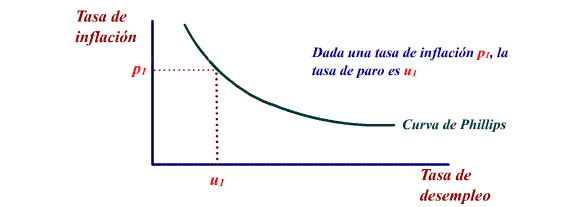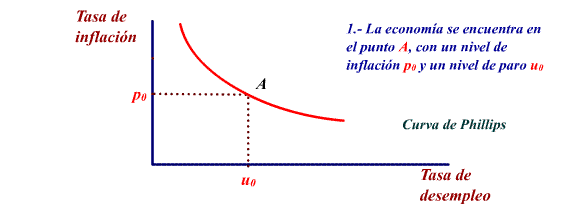Philips Curve
The Philips curve started after an investigation
was carried out in England in the 19th century. The investigation
found a negative correlation between the increase in salaries
and the rate of employment.
The
lower the unemployment in an economy, the higher the rate of
increase in wages paid to labor in that economy.
Given the strong relationship between salaries
and prices, this curve is usually used to represent the relationship
between inflation and unemployment.

The explanation resides in the fact that as
aggregate demand increases, the tension on prices is greater and
they start to rise, whilst unemployment decreases.
In the short term, when prices increase
salaries decrease (the nominal salaries usually increase at
a lower rate than the prices). This decrease in salaries makes
labour force cheaper and companies demand more work.
This curve seems to cause a problem for a
country's economic authorities: they have to choose between low
inflation with high unemployment or higher inflation with lower
unemployment.
In short, upon fighting inflation
(cooling the economy down) unemployment increases, whilst they
want to fight against unemployment by relaunching the economy,
they will have to accept an increase in inflation.
The relationship that the Philips curve describes
looses validity in the long term.
In the long term, the nominal salaries
end up being effected by the increase in prices, which makes
the initial fall of the salaries disappear and the companies
get rid of the workers they initially contracted.
Let's have a look in more detail at this movement
in the long term:
Let's suppose that the government
takes measures to promote demand and fight unemployment. This
provokes a movement along the Philips curve from A to B.
Slowly the salaries are effected by
the increase in prices, which makes companies slowly eliminate
additional labour force that they contracted. The Philips Curve
moves towards the right until it gets to point C: the same level
of unemployment as the start, with a higher level of prices.


